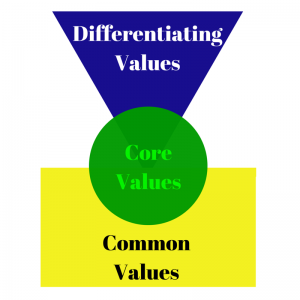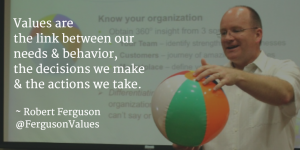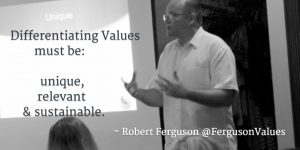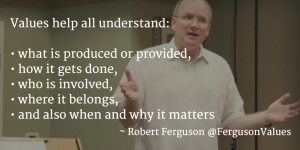Responsiveness. The Tasmanian Devil?
Avid watchers of the Looney Tunes series of cartoons will remember the distinctive cartoon character of the Tasmanian Devil. He was known for his ravenous appetite and crazed behavior, spinning around and around in a deliberate, but frantic manner. Maybe you’ve met people who remind you of this cartoon character? But who would deliberately act this way?
An organization that includes Responsiveness as a core Value may be at risk.
Responsiveness is an important value for many organizations. Anyone in a customer-facing role knows about being responsive. Responding to customers is generally #1 priority. It may not always be pleasant. It is often not easy. But if a job calls for helping customers – find, buy, fix, resolve, exchange, return, or any other support or activity that involves customers – then the one helping a customer needs to understand the value of responsiveness.
In a retail environment this may seem obvious. You walk into a store and an employee asks you “May I help you?” And then they respond to your request, quickly. At least that’s the desired experience.
In a business-to-business setting, such as an executive calling a professional services firm for help, it is equally assumed that someone will respond to their request in a timely manner. Again, this is the desired experience.
Organizations might choose to include responsiveness as a core Value for two good reasons, and one bad one.
The good reasons are:
- There is a history of poor responsiveness in the organization and a rededication of customer focus and attention is required to ensure behavior is changed. Permanently.
- In a competitive environment where the norm is poor responsiveness, this is an area of opportunity to create differentiation, and ideally competitive advantage.
The bad reason, and more common one, is:
- Because responsiveness is expected, sounds good, and is stating the obvious.
Consider the definition of the term Responsiveness:
- readily reacting or replying to people or events
- answering, replying or responding quickly
Therefore, answering a request quickly can be considered success – even if the response is not the best one or even the correct one. In other words, if you are looking for responsiveness at the drive-thru of a fast food restaurant and your order is ready before you can even dig out your money to pay, but you end up with a fish sandwich instead of your desired hamburger, the restaurant employee has still maintained the value of responsiveness. However, you are likely not a happy customer.
Quickness alone does not equate to responsiveness, at least as a core Value. Accuracy is assumed.
So what is a better definition of Responsiveness? Maybe the Tasmanian Devil cartoon character can point us in the right direction.
In the island state of Tasmania, the Department of Treasury and Finance is one organization that provides a superior definition of Responsiveness. As stated in their glossary of terms:
“Indicators of ‘responsiveness’ measure the extent to which the demand and preferences of the public are satisfied. They focus on the quality of service or the standard of service.”
In other words, responsiveness is based on the satisfaction of the customer – the public. What a novel idea! But why would a government treasury and finance department appear so customer-centric? Maybe it’s because their entire existence depends on collecting money from the public and managing it effectively, regardless if the people like it. It’s almost as if they have taken the extreme approach of operating in a manner completely opposite to what their customers expect. That is differentiation.
In fact, if the environment in which an organization operates is particularly challenging, competitive, or even hostile, a values-based approach can be even more effective. Again, the Department of Treasury and Finance for the island state of Tasmania has established a model for which others can learn. As they state on their website:
“The Department of Treasury and Finance is a values-based organisation. Treasury employees have been involved in developing our values, a process that began in 2001. Our core set of values was launched in 2005. These go beyond statements of principle to indicate the kinds of behaviours that demonstrate our values in action. Our Values Team has members from every Branch and is responsible for making sure that we embed our values in all our systems and processes. Each year we celebrate Values Week, which is held on the anniversary of the launch of our values.”
Wow! This organization is clearly a leader in defining a set of values that creates differentiation and defines success. Wouldn’t it be great if more organizations learned from such a great example? Maybe a trip to Tasmania is all that is required….
Note: This post originally published for Idea Exchange.







